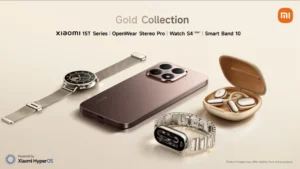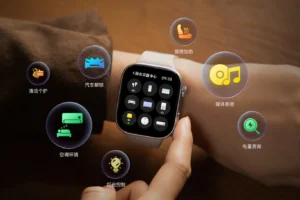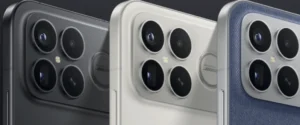iPhone vs. Xiaomi Camera: The Real Deal?
iPhone Cameras vs. Xiaomi: Is the Hype Real? Debunking the Myth and Comparing with Other Brands
Hey everyone, and welcome back to xiaomiforall.com! Today, we’re diving headfirst into one of the hottest debates in the smartphone world: are iPhone cameras really that much better than Xiaomi’s? Apple has long been hailed as the king of mobile photography, building up a pretty serious hype machine that seems almost unbreakable. But is it all just marketing fluff, or is there genuine substance behind those rave reviews? And where do the other big players like Samsung, Honor, and OPPO fit into this picture? We’re going to break it all down, nice and simple, with a good dose of critical thinking and actual facts.
The iPhone Camera Hype: Myth or Reality?
Let’s face it, iPhones have earned their stellar reputation in mobile photography, and it’s not just by chance. From the early days of the iPhone 4S all the way up to the latest Pro Max model, Apple has consistently focused on a few key things: making things work smoothly, keeping it simple for the user, and really dialing in that optimization. But what is it about those iPhones that gets everyone so excited?
Top-Notch Image Processing: Apple’s real magic often lies in its software. They’re brilliant at blending artificial intelligence, fancy algorithms like Deep Fusion and Smart HDR, and making sure everything plays nicely with the actual camera hardware. The result? Photos that tend to have vibrant colors, accurate white balance, and a fantastic dynamic range, even when you’re shooting in tricky low-light situations. Take the iPhone 15 Pro Max, for instance. It packs a 48MP main sensor, second-gen optical image stabilization, and up to 5x optical zoom. These specs alone put it right at the top for mobile photography and videography, especially when you consider features like ProRes recording and Dolby Vision. It’s this seamless blend of hardware and software that makes it a go-to for many.
Ecosystem and User Experience: One of the biggest advantages Apple has is its ecosystem. If you’re already in the Apple world with an Apple Watch, iCloud, and Apple Photos, moving your pictures around, editing them, and sharing them is just… easy. It’s a smooth, integrated experience. Plus, iPhones are often super optimized for social media sharing, and formats like Apple ProRAW make it a breeze to edit your photos without losing any quality. This whole user-centric approach really contributes to the perception that iPhone photos are simply “the best” for the average person.
Marketing and Brand Perception: You can’t talk about Apple without mentioning their marketing prowess. They’ve done an incredible job of selling the idea that an iPhone camera equals premium quality. It’s not just about the tech; it’s about the status symbol. The exclusivity associated with the brand amplifies the hype, making iPhones more than just cameras – they’re a statement.
However, while the hype is real, it doesn’t always translate to outright technical superiority in every single aspect. iPhones produce stunning results, no doubt, but they aren’t always the undisputed champions when you stack them up against competitors like Xiaomi in every technical department.
Xiaomi: The Contender Giving the King a Run for His Money
Xiaomi has made some serious leaps and bounds in the camera department, especially since their collaboration with Leica, a name synonymous with legendary optics. Phones like the Xiaomi 13T Pro and the more recent Xiaomi 14 Ultra have proven that the Chinese giant isn’t just competing; in some areas, they’re actually outperforming iPhones. So, what’s driving this impressive progress?
Cutting-Edge Hardware: Xiaomi is clearly betting big on impressive hardware, often featuring larger sensors. The Xiaomi 14 Ultra, for example, boasts a massive 1-inch LYT-900 main sensor, which is designed to capture significantly more light and detail than many of its rivals. The Xiaomi 15 Ultra takes this even further, packing a quad-camera setup with 50MP sensors across the board – main, ultrawide, and two telephotos – all featuring Leica Summilux optics. This setup offers incredible versatility for different shooting scenarios. For comparison, while the iPhone 15 Pro Max has a strong 48MP main camera, its secondary sensors are typically 12MP, falling short of Xiaomi’s higher-resolution offerings in those areas.
Zooming Ahead in Zoom: Where Xiaomi has really started to pull ahead of Apple is in zoom capabilities, both optical and digital. Devices like the Xiaomi 13 Ultra and 14 Ultra offer up to 5x optical zoom, which is on par with the iPhone 15 Pro Max. However, Xiaomi often includes additional telephoto lenses, providing a wider range of focal lengths and greater flexibility. Many users on platforms like X have pointed out that the Xiaomi 14 Ultra often delivers superior zoom quality compared to the iPhone, even though Apple still generally leads in video recording.
Night Mode and Leica Processing: The partnership with Leica has had a noticeable impact on Xiaomi’s night mode performance. Their algorithms are now really starting to rival Apple’s processing. Take the Xiaomi 13T Pro, for example. Independent tests have often shown its night shots boasting more faithful colors and less noise, sometimes even outperforming several recent iPhones. This shows that Xiaomi is serious about low-light photography.
Value for Money: Let’s talk about price. While an iPhone 15 Pro Max can easily set you back over €1,200, Xiaomi devices like the Xiaomi 15 Ultra (often priced between €1,199-€1,499) or the more budget-friendly Xiaomi 14T Pro offer comparable photographic performance for a more attractive price point. This makes Xiaomi a really compelling option for anyone who wants top-tier camera quality without necessarily paying that absolute top-tier premium price.
However, it’s not all perfect for Xiaomi. There are still areas where they can improve. Their social media optimization isn’t always as seamless as Apple’s, and sometimes their camera app can feel a bit complex due to the sheer number of features and settings. Additionally, Xiaomi’s ecosystem isn’t quite as tightly integrated as Apple’s, which can impact the overall user experience.
So, Are iPhone Cameras Really That Much Better Than Xiaomi’s?
Technically speaking, the answer is a pretty firm no. iPhone cameras aren’t that much better than Xiaomi’s across the board. In many key areas, like zoom capabilities, low-light performance, and overall lens versatility, Xiaomi is not only matching Apple but often surpassing them. For instance, as mentioned, the Xiaomi 13T Pro has been praised by tech experts for its ability to outperform several recent iPhones in terms of resolution, versatility, and low-light performance, thanks to its larger sensor and Leica optics.
However, Apple does maintain an edge in a few crucial areas:
- Consistency: iPhones generally deliver predictable, excellent results in almost any shooting condition. This makes them ideal for users who value simplicity and want reliable output without fiddling too much with settings.
- Videography: When it comes to video recording, the iPhone still reigns supreme. Features like 4K recording with Dolby Vision and advanced stabilization on models like the iPhone 16 Pro Max make it the undisputed leader for mobile video creators.

- Ecosystem Integration: The seamless integration with editing tools and social media platforms gives Apple a significant advantage for content creators who rely on a smooth workflow from capture to sharing.
On the flip side, Xiaomi shines when it comes to raw hardware and flexibility. They often pack more lenses and better technical specifications into their devices at a more competitive price point. Ultimately, the choice between them really boils down to your personal priorities. If you prioritize simplicity and a fluid ecosystem, the iPhone is a hard contender to beat. But if you’re after advanced hardware, flexibility, and great value, Xiaomi presents a seriously strong alternative.
Where Do Other Brands Fit In?
The mobile photography race isn’t just a two-horse race between Apple and Xiaomi. Other brands like Samsung, Honor, and OPPO have also been stepping up their game significantly, and in 2025, they’re firmly in the mix:
- Samsung: The Samsung Galaxy S25 Ultra is a formidable competitor, especially in the zoom department. Its periscope telephoto lens, which offers high-quality zoomed shots with minimal degradation, and its suite of Galaxy AI features make it a strong rival to the iPhone 15 Pro Max and Xiaomi’s top models. While direct comparisons often show the iPhone 15 Pro Max having a slight edge in overall consistency, Samsung leads in zoom performance and AI-assisted editing capabilities.

- Honor: The Honor Magic7 Pro has made quite a splash in 2025, particularly with its impressive front-facing camera. Boasting a 50MP selfie shooter and a versatile rear camera system (main, ultrawide, and telephoto), it’s often considered the best for selfies, outperforming both Xiaomi’s 14 Ultra (32MP front) and Apple’s 16 Pro Max (12MP front) thanks to its high resolution and AI enhancements.
- OPPO: The OPPO Find X8 Pro stands out with its dual 50MP Sony and Samsung sensors and a 6x telephoto lens, delivering outstanding low-light performance. Its quick interface and AI features position it as a direct competitor to the Xiaomi 15 Ultra and iPhone 15 Pro Max, particularly for users who value photographic versatility.
Looking at the rankings from reputable sources like Xataka and DXOMark in 2025, the iPhone 16 Pro Max often tops the charts for videography. Meanwhile, the Xiaomi 15 Ultra and Honor Magic7 Pro are frequently battling for the top spot in still photography. Samsung and OPPO are consistently close behind, each with their own unique strengths, whether it’s advanced zoom or exceptional night mode performance.
Beyond the Hype: Making the Right Choice for You
The buzz surrounding iPhone cameras is well-deserved due to their remarkable consistency, user-friendliness, and excellent social media optimization. However, it’s not an insurmountable lead. Xiaomi has dramatically closed the gap, introducing advanced sensors, Leica optics, and more competitive pricing, often outperforming Apple in areas like zoom and overall lens versatility. Brands like Samsung, Honor, and OPPO are also offering compelling alternatives, each with their own standout features that make them shine in specific scenarios.
If you’re a Xiaomi enthusiast, phones like the Xiaomi 15 Ultra or the 14T Pro are clear evidence that the brand is right there with the best in mobile photography, often offering more bang for your buck. The decision ultimately hinges on what matters most to you. If you value unparalleled simplicity and a tightly integrated ecosystem, the iPhone is likely your best bet. But if you’re all about cutting-edge hardware, flexibility, and getting great performance at a competitive price, then Xiaomi, along with brands like Honor and OPPO, presents equally valid and exciting options. Here at xiaomiforall.com, we’re thrilled to see Xiaomi’s rapid advancements in photography, consistently redefining what we expect from premium smartphones.
What do you think? Has Xiaomi finally surpassed the iPhone in the camera game? Drop a comment below and share your own photo experiences with your Xiaomi devices!






